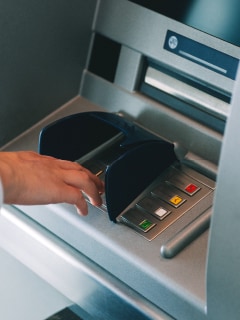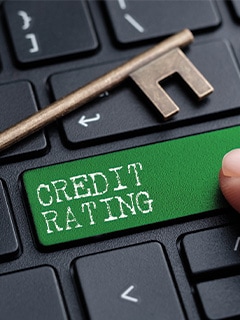CKYC Registry
-
Customer Service Contact us Service request Locate a branch
Find all the help you need
Scan the QR, get our app, and find help on your fingertips

Help CenterSupport topics, Contact us, FAQs and more
-
Login
Are you ready for an upgrade?
Login to the new experience with best features and services
-
Login
Are you ready for an upgrade?
Login to the new experience with best features and services
- Accounts
-
Deposits
IDFC FIRST Bank Deposits
View all Deposits -
Loans
IDFC FIRST Bank Loans
View all Loans - Wealth & Insure
-
Payments
IDFC FIRST Bank Payments
View all Payments -
Cards
IDFC FIRST Bank Cards
View all Cards - Blogs
- Corporate Account
-
Cash Management Services
IDFC FIRST Bank Cash Management Services
View all Cash Management Services - Supply Chain Finance
-
Corporate Lending
IDFC FIRST Bank Lending
View all -
Treasury
IDFC FIRST Bank Treasury
See more details - NBFC Financing
Support topics, Contact us, FAQs and more
- IDFC FIRST Bank Accounts
-
Savings Account
-
Corporate Salary
Account -
Senior Citizens
Savings Account -
First Power
Account -
Current Account
-
NRI Savings
Account -
TASC Institutional
Account -
Savings Account
Interest Calculator
- IDFC FIRST Bank Deposits
-
Fixed Deposit
-
Recurring Deposit
-
NRI Fixed Deposit
-
Safe Deposit Locker
-
FD Calculator
-
RD Calculator
- IDFC FIRST Bank Loans
-
Personal Loan
-
Consumer Durable
Loan -
Home Loan
-
Business Loan
-
Professional Loan
-
Education Loan
-
New Car Loan
-
Pre-owned Car Loan
-
Two Wheeler Loan
-
Pre-owned Two
Wheeler Loan -
Commercial Vehicle
Loan -
Gold Loan
-
Loan Against Property
-
Loan Against Securities
-
Easy Buy EMI card
-
Personal Loan
EMI Calculator -
Education Loan
EMI Calculator -
Home Loan
EMI Calculator
- IDFC FIRST Bank Wealth & Insure
-
FIRST Select
-
FIRST Wealth
-
FIRST Private
-
Mutual Funds
-
Sovereign Gold Bond
-
Demat Account
-
Term Insurance
-
Life Insurance
-
Health Insurance
-
General Insurance
-
Bonds
-
Loan Against
Securities -
Portfolio Management
Service
- IDFC FIRST Bank Payments
-
FASTag
-
Credit Card
Bill Payments -
UPI
-
Funds Transfer
-
Forex Services
-
Pay Loan EMI
- IDFC FIRST Bank Cards
-
Ashva :
Metal Credit Card -
Mayura :
Metal Credit Card -
FIRST Millennia
Credit Card -
FIRST Classic
Credit Card -
FIRST Select
Credit Card -
FIRST Wealth
Credit Card -
FIRST WOW!
Credit Card -
Deals
-
Debit Cards
-
Co-branded Cards
-
Credit Card
EMI Calculator -
FIRST Corporate
Credit Card -
FIRST Purchase
Credit Card -
FIRST Business
Credit Card
- Premium Metal Credit Cards
-
AshvaLifestyle1% Forex₹2,999
-
MayuraLifestyleZero Forex₹5,999
-
FIRST PrivateInvite Only
- Best for travellers
-
MayuraZero ForexMetal₹5,999
-
Ashva1% ForexMetal₹2,999
-
FIRST WOW!Zero ForexTravelLifetime Free
-
FIRST SWYPTravel OffersEMI₹499
-
FIRST Select1.99% ForexLifestyleLifetime Free
-
FIRST Wealth1.5% ForexLifestyleLifetime Free
-
Club VistaraTravelLifestyle₹4,999
-
IndiGo IDFC FIRST Dual Credit CardTravelLifestyle₹4,999
- Max benefits, Free for life
-
FIRST Classic10X RewardsShoppingNever Expiring Rewards
-
FIRST Millennia10X RewardsShoppingNever Expiring Rewards
-
FIRST Select10X RewardsLifestyle1.99% Forex
-
FIRST Wealth10X RewardsLifestyle1.5% Forex
-
FIRST WOW!RewardsTravelZero Forex
-
LIC ClassicRewardsInsuranceShopping
-
LIC SelectRewardsInsuranceShopping
- Reward Multipliers
-
AshvaLifestyleMetal₹2,999
-
MayuraLifestyleZero Forex₹5,999
-
FIRST ClassicNever Expiring RewardsShoppingLifetime Free
-
FIRST MillenniaNever Expiring RewardsShoppingLifetime Free
-
FIRST SelectNever Expiring RewardsLifestyleLifetime Free
-
FIRST WealthNever Expiring RewardsLifestyleLifetime Free
- Rewards & Credit on UPI
-
FIRST Power+FuelUPI₹499
-
FIRST PowerFuelUPI₹199
-
FIRST EA₹NVirtual1% Cashback₹499
-
FIRST DigitalVirtualUPI₹199
-
IndiGo IDFC FIRST Dual Credit CardUPITravelDual cards
- Fuel and Savings
-
FIRST PowerRewardsUPI₹199
-
FIRST Power+RewardsUPI₹499
-
LIC ClassicRewardsInsuranceShopping
-
LIC SelectRewardsInsuranceShopping
- Express and Flaunt
-
AshvaMetal1% Forex₹2,999
-
MayuraMetalZero Forex₹5,999
-
FIRST SWYPEMIOfferMAX₹499
-
FIRST MillenniaRewardsShoppingLifetime Free
- FD Backed rewarding Credit Cards for all
-
FIRST EA₹NVirtualCashback₹499
-
FIRST WOW!Zero ForexTravelLifetime Free
-
CreditPro Balance TransferTransfer & SaveReduce InterestPay Smartly
- IDFC FIRST Bank NRI Forex Solutions
-
Send money to India-Wire transfer
-
Send money to India-Digitally
-
Send money abroad
-
Max Returns FD (INR)
- IDFC FIRST Bank MSME Accounts
-
Platinum Current
Account -
Gold
Current Account -
Silver Plus
Current Account -
Merchant Multiplier
Account -
Agri Multiplier
Account -
TASC Institutional
Account -
Dynamic Current
Account -
World business
Account -
First Startup
Current Account
- IDFC FIRST Bank Business Loans
-
Business Loan
-
Professional Loan
-
Loan Against Property
-
Business Loan for Women
-
Working Capital Loan
-
Construction Equipment Loan
-
Machinery Loan
-
Healthcare Equipment Loan
- IDFC FIRST Bank Business Solutions
-
Payment Solutions
-
Tax Payments
-
Doorstep Banking
-
Point of Sale (POS)
-
Escrow Accounts
-
NACH
-
Payment Gateway
-
UPI
-
Virtual Accounts
-
As per amendment in the Income Tax Rules, PAN or Aadhaar are to be mandatorily quoted for cash deposit or withdrawal aggregating to Rupees twenty lakhs or more in a FY. Please update your PAN or Aadhaar. Kindly reach out to the Bank’s contact center on 1800 10 888 or visit the nearest IDFC FIRST Bank branch for further queries.
-
-
Most Searched
Sorry!
We couldn’t find ‘’ in our website
Here is what you can do :
- Try checking the spelling and search
- Search from below suggestions instead
- Widen your search & try a more generic keyword
Suggested
Get a Credit Card
Enjoy Zero Charges on All Commonly Used Savings Account Services
Open Account Now
Credit Card
7 ways to increase your credit limit
Key Takeaways
Increasing your credit card limit can enhance your financial flexibility, help you manage expenses better, and potentially improve your credit score.
There are various methods to increase your credit card limit, such as improving your credit score, maintaining a good payment history, and requesting a limit increase directly from your bank.
A higher credit limit can offer several benefits, including better financial security and the ability to make larger purchases.
However, it's essential to consider your spending habits and potential risks before requesting an increase.
Credit cards have become an integral part of modern financial management, offering convenience and financial flexibility. Whether it's for daily expenses, emergencies, or significant purchases, a credit card can be a reliable tool in your financial arsenal. However, as your expenses grow, you might find your existing credit limit insufficient. This is where increasing your credit card limit comes into play. Not only does it provide more financial leeway, but it also offers additional benefits, such as a boost to your credit score.
What is a credit card limit?
A credit card limit is the maximum amount of money you can borrow using your credit card. It is determined by the card issuer based on various factors including your credit score, income, and credit history. The limit ensures that you don't overspend beyond a certain threshold, helping both you and the bank manage financial risk. However, this limit is not a fixed sum, it can be increased or decreased by the card issuer periodically. Staying within this limit is crucial to maintaining a healthy credit score and avoiding over-limit fees.
A higher credit limit not only offers more spending flexibility but can also positively impact your credit utilisation ratio, an essential factor in maintaining a good credit score.
Ways to increase your credit card limit
1. Maintain a strong credit score
Your credit score is one of the most significant factors that banks consider when determining your credit card limit. A higher credit score indicates that you are a low-risk borrower, making you eligible for a higher limit. To improve your credit score, ensure that you pay your bills on time, keep your credit utilisation ratio low, and avoid applying for multiple credit cards in a short period.
In case, you don’t have a credit profile, you can opt for IDFC FIRST Bank FIRSTearn credit card that comes with no credit verification or salary checks. It is a FD secured credit card which offers a credit limit of more than 100% of your fixed deposits. The card comes with several shopping benefits like 1% cashback on every spend via IDFC FIRST Bank app, 0.5% cashback on utility bills and insurance payments, up to ₹100 discount on movie tickets, and complimentary roadside assistance.
2. Regularly use your credit card
Consistent and responsible use of your credit card can demonstrate to the bank that you manage credit well. Regular usage followed by timely payments can build a positive credit history, which can make you a strong candidate for a limit increase. However, ensure that you don't exceed 30% of your current limit to maintain a low credit utilisation ratio.
3. Increase your income
Your income is another critical factor that determines your credit card limit. If your income increases, you can provide proof of the same to your bank, making a strong case for a limit increase. Banks often view higher income as a sign of greater repayment capacity, which can lead to an enhanced credit limit.
4. Request a limit increase from your bank
If you have been a responsible credit card user, you can directly request your bank for a limit increase. This can be done through the bank's online portal, customer service, or by visiting a branch. Make sure you highlight your strong credit history, increased income, or any other relevant factors that support your request.
5. Reduce existing debt
A lower debt-to-income ratio (the ratio of your total monthly debt payments to your monthly gross income) signals that you are managing your debts well. By paying off existing loans or credit card balances, you can improve this ratio, making it easier to qualify for a higher credit limit.
6. Update your information
Sometimes banks may not be aware of any change in your financial status which could make you eligible for a higher credit card limit. You would have received a substantial pay hike in the past few months, but you might be still using your old credit card with a pre-set limit. In such cases, you can inform your bank and ask them to increase your limit on your new card or issue a new card with a higher limit.
You should also consolidate your accounts to give the bank a better financial picture. Instead of having several bank accounts with small sums in each, put all your money in one account. This will offer a better picture of your finances.
7. Wait for an automatic increase
Some banks automatically increase your credit limit after a period of consistent use and timely payments. While this might take some time, it requires no effort on your part. Keep using your card responsibly, and you might find your limit increased without even having to ask.
Benefits of increasing credit card limits
1. Enhanced financial flexibility
A higher credit limit gives you more spending power, allowing you to make larger purchases or manage emergencies without worrying about exceeding your limit.
2. Improved credit score
A higher credit limit can lower your credit utilisation ratio, which positively impacts your credit score, making you eligible for better financial products.
3. Better rewards
With a higher limit, you can take advantage of more significant rewards and cashback offers, as you can spend more without worrying about maxing out your card.
4. Higher loan eligibility
A high credit limit indicates strong financial management, which can enhance your eligibility for loans and other credit products.
5. Convenience in emergencies
In unexpected situations, a higher limit ensures you have the necessary funds available, providing peace of mind.
How do I request a credit limit increase on my credit card?
To request a credit card limit increase, you need to contact your issuing bank. Several banks offer the online method to request an increase on your credit limit. To raise a request online, log in to your credit card account through your bank’s online portal, navigate to the credit limit increase section, and follow the instructions. Alternatively, you can call customer service or visit a branch. Be prepared to provide updated financial information, such as proof of income, and highlight your responsible credit usage. The bank will review your request, and if you meet the criteria, your limit will be increased.
Things to consider before requesting a credit card limit increase
1. Spending habits
Assess whether you genuinely need a higher limit or if it might lead to unnecessary spending. Only request an increase if it aligns with your financial goals.
2. Impact on credit score
While a higher limit can improve your credit score, a hard inquiry during the request process might temporarily lower it. Consider this before making a request.
3. Existing debt
If you already have substantial debt, it might be wiser to focus on paying it off before increasing your credit limit to avoid falling deeper into debt.
4. Bank’s policies
Different banks have different policies for credit limit increases. Familiarise yourself with your bank’s requirements and procedures to ensure a smooth process.
Difference between the total credit limit and available credit limit
The total credit limit is the maximum amount of credit that your card issuer has granted you. For instance, if your total credit limit is ₹1,00,000, that is the maximum amount you can charge on your card. The available credit limit, on the other hand, is the remaining credit that you can use after accounting for any outstanding balances. If you have already spent ₹40,000, your available credit limit would be ₹60,000. Keeping track of your available limit is crucial to avoid overstepping your total credit limit and incurring penalties.
Conclusion
Increasing your credit card limit is a strategic decision that can enhance your financial flexibility and creditworthiness. However, it’s vital to evaluate your spending habits and the potential risks involved. By responsibly managing your credit and making informed decisions, you can unlock numerous benefits, such as better rewards, improved credit scores, and financial convenience.
If you're considering a credit card upgrade, explore IDFC FIRST Bank Credit Cards, which offer attractive benefits, competitive rates, and tailored features to suit your lifestyle, making your financial journey both rewarding and secure. If you prefer to enjoy the finer things in everyday life explore metal credit cards from IDFC FIRST Bank that come with modern day privileges with a touch of Indian history.
Disclaimer
The contents of this article/infographic/picture/video are meant solely for information purposes. The contents are generic in nature and for informational purposes only. It is not a substitute for specific advice in your own circumstances. The information is subject to updation, completion, revision, verification and amendment and the same may change materially. The information is not intended for distribution or use by any person in any jurisdiction where such distribution or use would be contrary to law or regulation or would subject IDFC FIRST Bank or its affiliates to any licensing or registration requirements. IDFC FIRST Bank shall not be responsible for any direct/indirect loss or liability incurred by the reader for taking any financial decisions based on the contents and information mentioned. Please consult your financial advisor before making any financial decision.
The features, benefits and offers mentioned in the article are applicable as on the day of publication of this blog and is subject to change without notice. The contents herein are also subject to other product specific terms and conditions and any third party terms and conditions, as applicable. Please refer our website www.idfcfirstbank.com for latest updates.
Our Credit Cards
IndiGo IDFC FIRST Dual Credit Cards
Earn IndiGo BluChips | Redeem on IndiGo flights | Power of Dual cards | 1.49% Forex Mark Up
Mayura Credit Card
Lounge access, 10X Reward, ₹4000 cashback, Zero Forex, Spa, Golf access
HPCL FIRST Power Credit Card
Fuel Card, 5% fuel savings, 2.5% Grocery & Utility Savings, 0 interest cash
FIRST Wealth Credit Card
Buy-1-Get-1 Movie ticket offers, airport lounge access, 1.5% forex markup, railway lounge visits
Related Products
Related Articles
Download IDFC FIRST Bank App
-
IndiGo IDFC FIRST Dual Credit Cards
Earn IndiGo BluChips | Redeem on IndiGo flights | Power of Dual cards | 1.49% Forex Mark Up
Know More -
Mayura Credit Card
Lounge access, 10X Reward, ₹4000 cashback, Zero Forex, Spa, Golf access
Know More -
HPCL FIRST Power Credit Card
Fuel Card, 5% fuel savings, 2.5% Grocery & Utility Savings, 0 interest cash
Know More -
FIRST Wealth Credit Card
Buy-1-Get-1 Movie ticket offers, airport lounge access, 1.5% forex markup, railway lounge visits
Know More



























